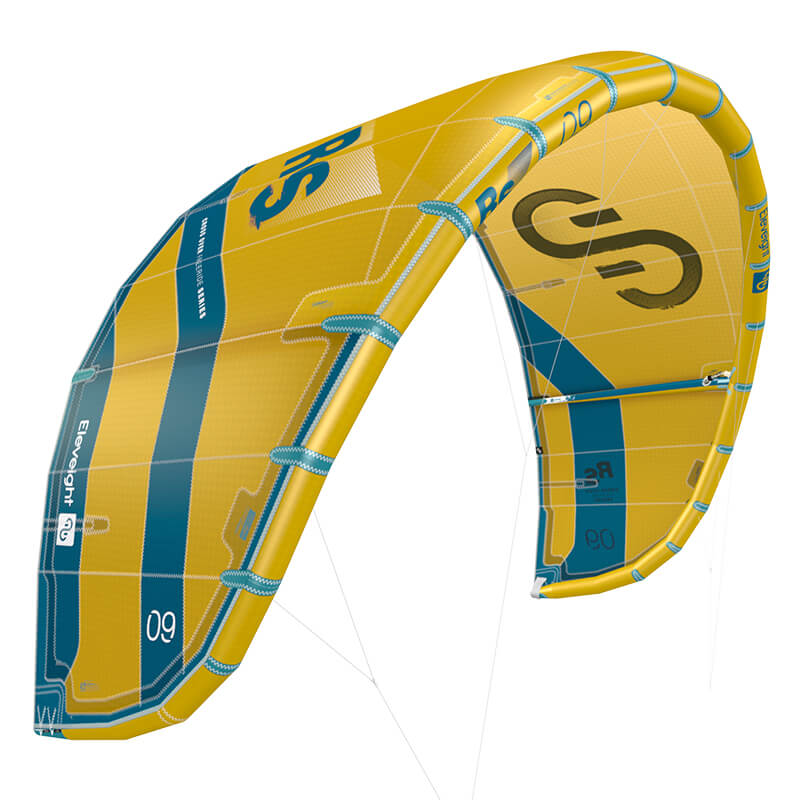When you purchase gear through links on our site, we may earn a small commission. Here’s why you can trust our tests and our affiliate partner.

Having had an organic growth plan since their inception, Eleveight have evolved into one of the most respected kite brands: nothing is released on a whim and their line up is well conceived and covers all bases… The brand now has seven kites in their line up and this, the RS, is at the heart of it. Now into its fifth iteration the RS is the ‘crossover freeride’ in the family. We’d put it into the Performance Freeride category of our Ultimate Test. For us it is one of the most exciting areas of kite development in recent times with most brands now acknowledging that a lot of riders want a kite that can perform well but that isn’t going to scare the bejesus out of you. And it’s not just regular riders who are on these three-strut performance freeride kites either – if you look through the field of the KOTA there are a lot of these ‘accessible’ kites that are now also the preferred option of the pros…
Out of the bag and the RS has a quality feel to it. Kite designer Peter Stiewe has been making kites for a while and build quality is refined and – importantly – light. Reinforcements are present but are minimal, the struts are notably skinny and the 10m we had on test weighed in more like a 7 or an 8m of comparable kites… Aspect ratio is high and the RS is built from Teijin X4 which the stiffest and more durable option for canopy cloth from the ubiquitous Japanese producer. The CS bar (which works across the Eleveight range) is a well refined no-fuss affair with a click-in QR, a comfortable grip and standard clam cleat.
In the air and the RS immediately felt lighter than its 10m. We had a super gusty session with big holes in the wind, and the RS wasn’t flustered at all and stayed in the air comfortably – it almost feels like a ‘lightwind-specific’ build but on a performance kite. With the higher aspect ratio, the RS sits forward in the window and absolutely trucks upwind, even when having to work the kite to maintain momentum. For riding in the waves this is a massive plus and quite simply equates to more waves per session, and if you’re looking to spend your time boosting then you can keep pushing the launch button safe in the knowledge that you’re going to get back home without any problem…
For boosting the RS does exactly what its shape would suggest – you can really send the kite for a nice grunty lift, or you can go for a more sedate approach and pull the bar in for a cruiser lift off. Either way you can expect plenty of time in the air… It’s a lofty, drifty, hangtime machine. It does loop too and – in the smaller sizes and in the right hands – it has Big Air fun written all over it.
With the thinner struts, we did wonder if the RS would lose some responsiveness and feel a bit sloppy, but the bridle and the well-honed set up ensure that this is a crisp and satisfying kite to fly, this higher aspect shape is never going to really whip around, but it turns intuitively and without any surprises. For riding in onshore surf conditions you can ride with confidence that it is not going to fall out of the air, and the smooth and consistent power delivery through the bar makes for fun park-and-ride ripping where you can depower plenty enough to ensure you’re riding the wave and not getting dragged by the kite.
Overall we were very impressed with the RS, it’s a light kite which has clear pluses but there are no compromises in performance. It’s a kite that would work in someone’s first quiver without scaring them off, but delve a little deeper and there is enough refined performance to meet the needs of 99% of riders.
